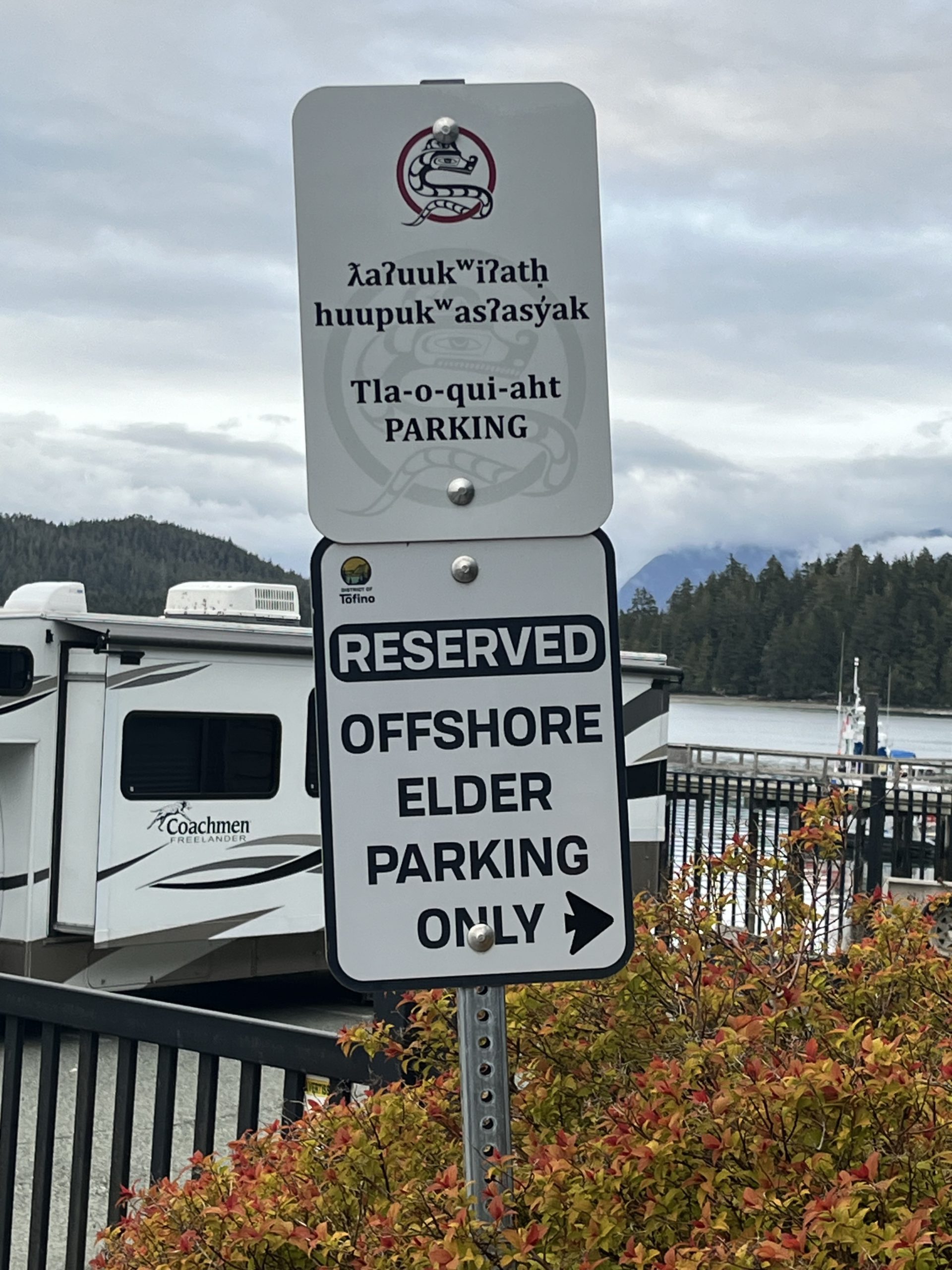
A sign at the government wharf in Tofino, BC reserving parking for Elders from the Indigenous communities of Clayquot Sound.
Yesterday I was on a call with one of our Complexity Inside & Out participants who was getting started with Participatory Narrative Inquiry and NarraFirma. Like I do with everyone, I pointed him to Cynthia Kurtz’s websites on these topics and then walked him through an installation of the NarraFirma WordPress plugin.
My friend wanted to use PNI to gather stories related to his family. He comes from a big family who have regular reunions at which more than 100 people come together, all of them descended from one particular couple four or five generations ago. The idea was to collect the stories that have flowed in the family over the generations. We brainstormed some really delightful activities that they could do if they had a couple of hundred stories and an upcoming reunion.
Mindful of Cynthia’s observation that PNI should be delightful, we came up with several options for working with stories and by the end of the conversation I was almost begging for an invitation to the next reunion! Short of that, I thought I’d record and share some of these ideas so if you are doing something similar this summer, you might think about doing this.
First, we discussed making the story collection as accessible as possible. NarraFirma is fine, but so too is a Google Survey, especially if you aren’t planning to do much catalysis with the story collection. In this case the idea was to collect many stories. There could be some signification, such as when this happened, or where. The main thing in this instance is collecting lots of anecdotes that can be used by the family in different activities.
Second, we discussed making the stories beautiful. Lay them out on colourful card stock so that folks can pick them up and read them. Turning up at the next family reunion with a deck of story cards perhaps including photos would get everyone interested and curious. So what could you do with them? Here are some ideas.
Here is a list of the ideas you shared during your conversation about sense-making with family stories and activities at family reunions:.
- Timeline and Map Activity: Create a big map and timeline where family members can pin stories in spatial and temporal context, helping to visualize the family’s history.
- Story Sorting Exercises: Print out story cards and have sorting activities where family members can categorize stories based on themes like transitions, love, or intersections with world events.
- Interactive Story Sharing: Use family reunions for sense-making by setting up walls where people can pin stories, sit down, read to each other, and learn from the shared experiences.
- Storytelling Prompts: Hand small groups of family members a few stories and see if they prompt more. Provide specific prompts to elicit stories, such as asking for memories that descendants should hear eliciting additions to significant moments in a families history by inviting others to share their perspectives on those events.
- Intergenerational Bridging: Use the stories to bridge generational gaps by having younger and older family members interact and share their perspectives on the same events.
- Creative Expressions: Encourage younger family members to create art, rhymes, songs, or other creative expressions based on the family stories, fostering a connection across generations.
- Recipe Sharing: Collect and share family recipes, along with the stories behind them, to preserve the culinary heritage.
- Games and Activities: Incorporate games that involve storytelling, such as a “pin the tail” style activity with story elements, or clustering stories by themes to see collective family patterns.
- Publishing Stories: After gathering and sorting stories, consider publishing them in a booklet or online platform for family members to access and cherish.
Colour these ideas firmly in the “positive experiences” category as activities that can be done at a big reunion full of barbecues, kids playing, other games and activities. Of course there are many families for whom this could be a deeply emotional and traumatizing experience, but these ideas can be used for those kinds of gatherings, just with a lot more intention around the invitation and hosting of the process.

